Jul 17, 2024 | Flooring America
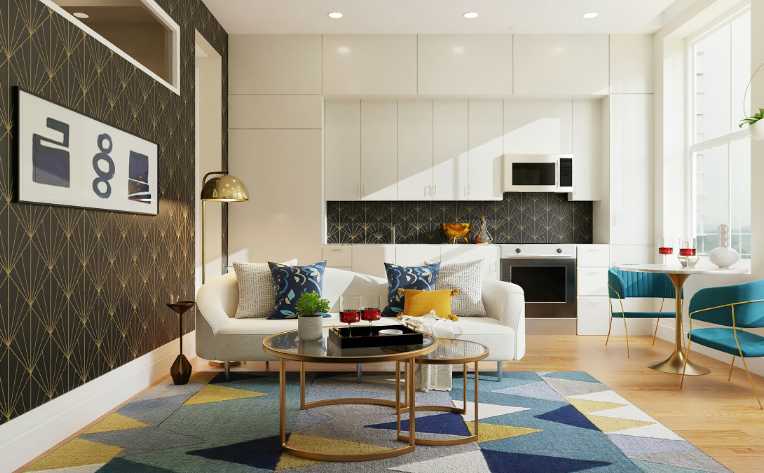
When it comes to style, the 1980s tend to get a bad rap. It was, after all, a decade of bold choices and creative expression, from leg warmers to mullets. Nowhere was this more evident than in home design. From clear furniture to geometric patterns, the '80s design style is making a comeback in a big way. Whether you're a retro enthusiast, home decorator, or interior designer, incorporating these elements into your space can bring a vibrant, nostalgic feel to your home.
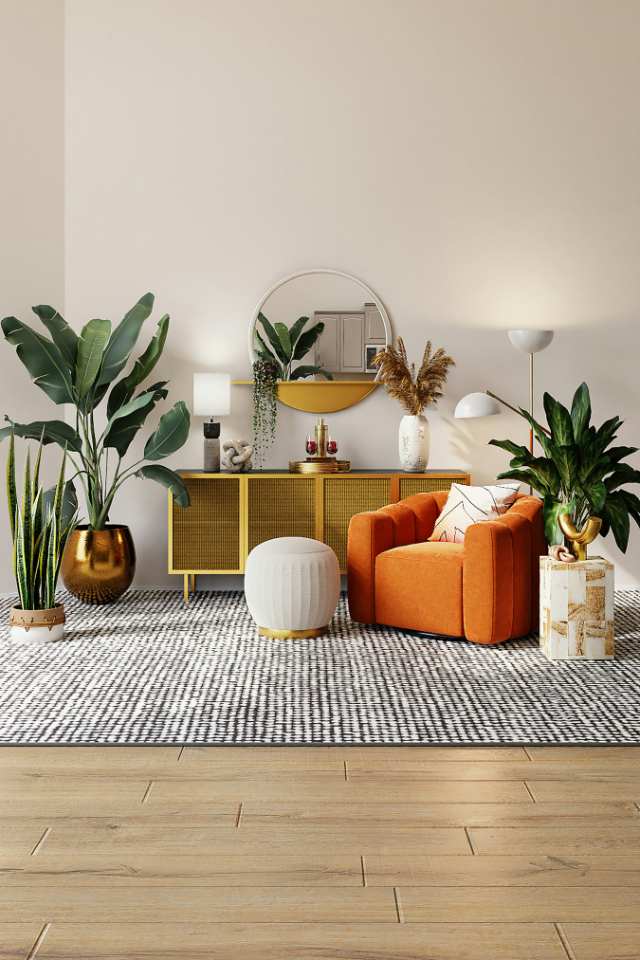
The 1980s design style, often referred to as "Postmodernism" or "Memphis Design" embraced boldness and individuality. Characterized by bright colors, eclectic patterns, and innovative materials, it was a departure from the subdued aesthetics of previous decades. The era’s design ethos was all about breaking the rules and making a statement.
As maximalism makes a bold return and retro vintage architecture regains popularity, adding 80s touches to your interior design can make a powerful statement. By incorporating vibrant paint hues and exploring the nuances of patterns and materials from the 1980s, you can create a dynamic and nostalgic atmosphere that captures the essence of this iconic era.
Take a look at these tips for incorporating the key elements of 1980s design into your home:
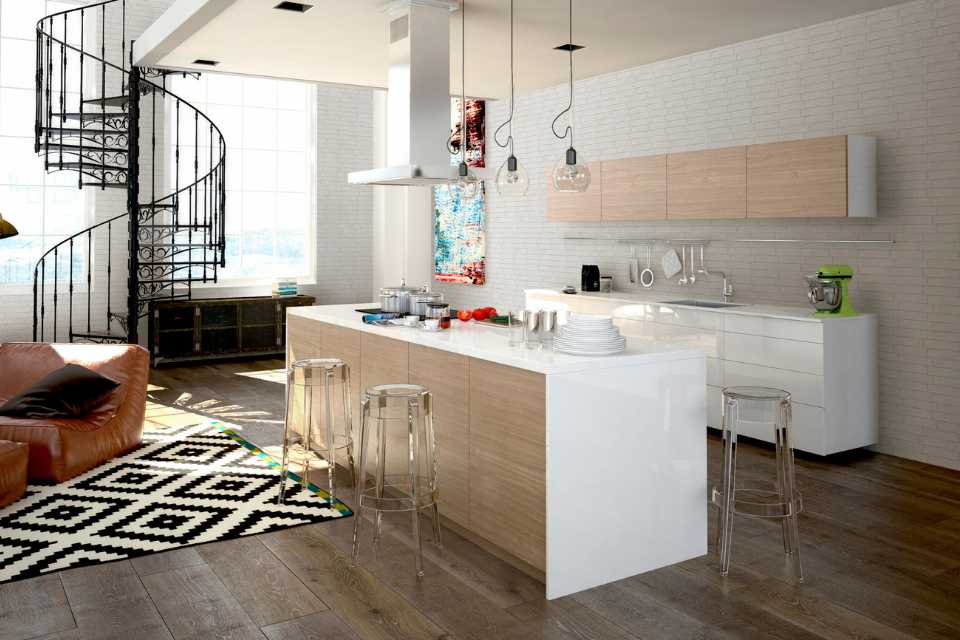
Brique White Matte/Satin Porcelain by Emser Tile
Translucent furniture was an iconic statement during the ’80s. And while we might have taken a turn since then from Lucite to glass, see-through pieces still very much have a place in your home. Consider adding light touches to open up a space, such as a glass coffee table, an open-paneled bookshelf, or even a reflective countertop in your bathroom.
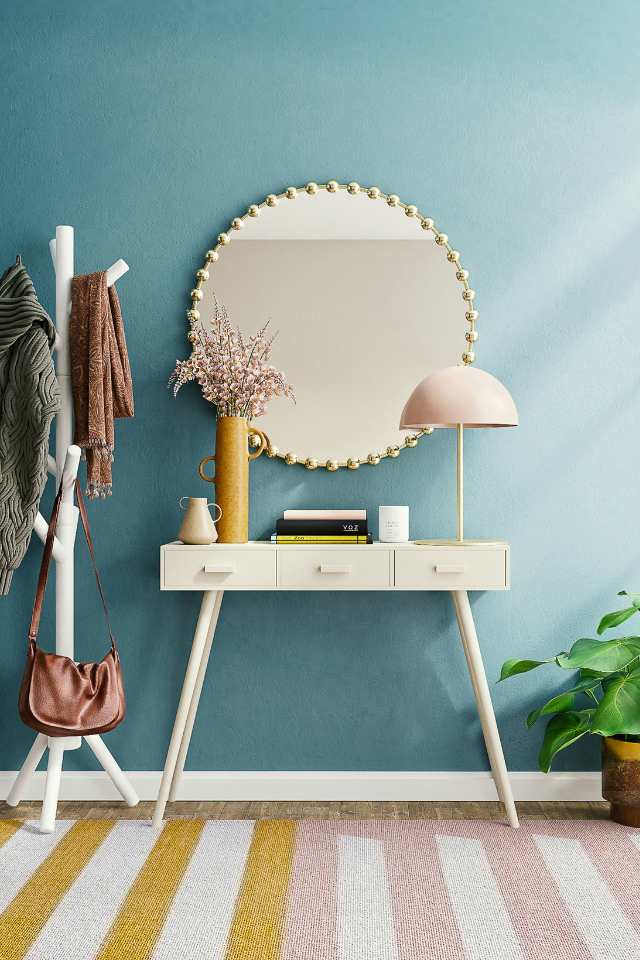
While muted tones are in right now, a pop of color here and there can really make a room sing. Take a nod from maximalist interior designers and channel your ’80s nostalgia by infusing bright shades into your projects. Place a set of vibrant pink throw pillows on your beige couch, contrast your wooden kitchen island with lively orange stools, or accessorize your living room with that vivid green armchair. Used sparingly, neon colors will act as delightful additions to your humble abode.
Though the sweeping glass-brick walls of the ’80s have been left behind in favor of more modern options, similar techniques can still create bright, natural light in your home. Think about giving your space a larger-than-life glimpse into the outside world, with floor-to-ceiling windows or glass doors. You’ll combine the feeling of a glass-brick wall with a more contemporary look.
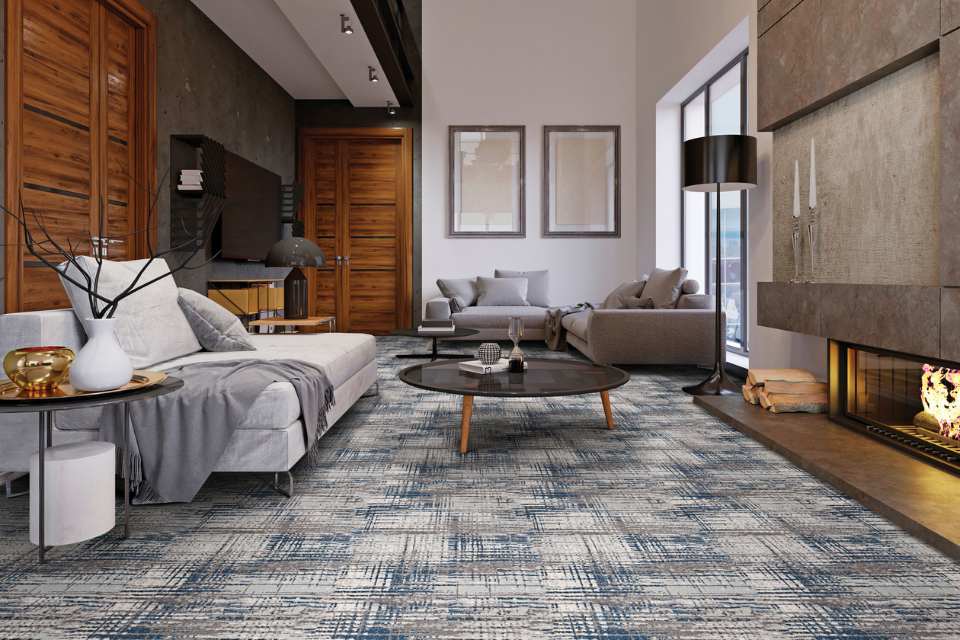
Downtown Setting Broadloom by Couristan
Yes, the style has undoubtedly changed over time, but patterned carpet certainly hasn’t disappeared. Trendy in the ’80s, this type of flooring has transformed into a variety of colors, designs, and cuts—and people continue to use it in their living rooms and bedrooms today. But if you want to spice up your space without rolling out all-new carpet, you can use patterned rugs to contrast your solid-colored floors.
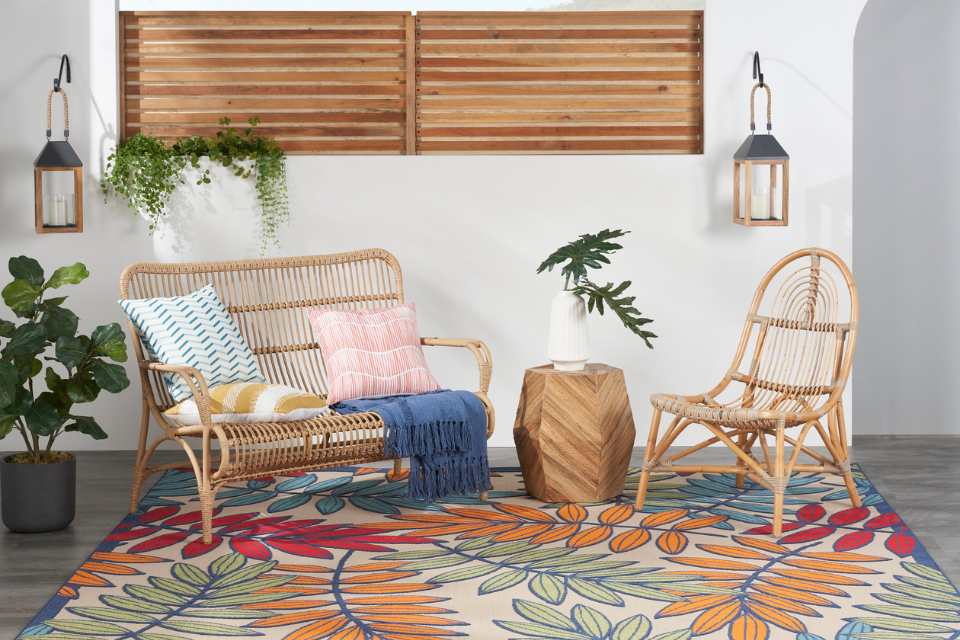
Aloha Multicolor area rug by Nourison
Leaves, foliage, and palm trees were everywhere during the ’80s. You could find them on clothing, bedspreads, and curtains. They even adorned some of your favorite characters from television. These days, tropical prints still have their place, but they feature much better on your walls: in the forms of small accent decals (great for gallery walls), framed prints, or canvases.
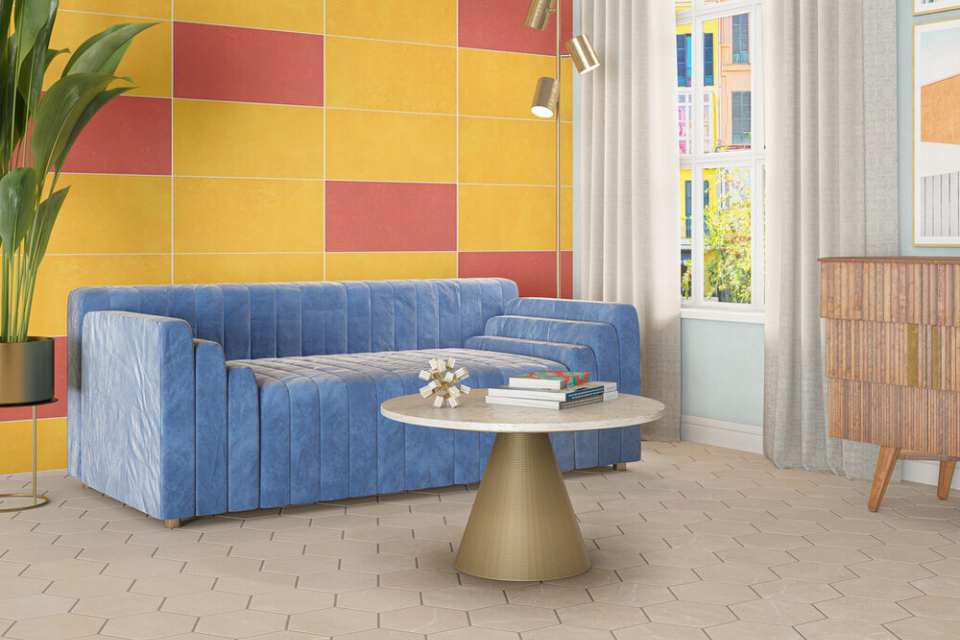
Perpetuo Elegant Beige Hexagon in Matte by Daltile
Geometric shapes were a hallmark of 1980s design. From furniture to wallpaper, bold geometric patterns were everywhere. You can incorporate this element by adding geometric-patterned throw pillows, rugs, or even wall art. The key is to keep it balanced to avoid overwhelming your space.
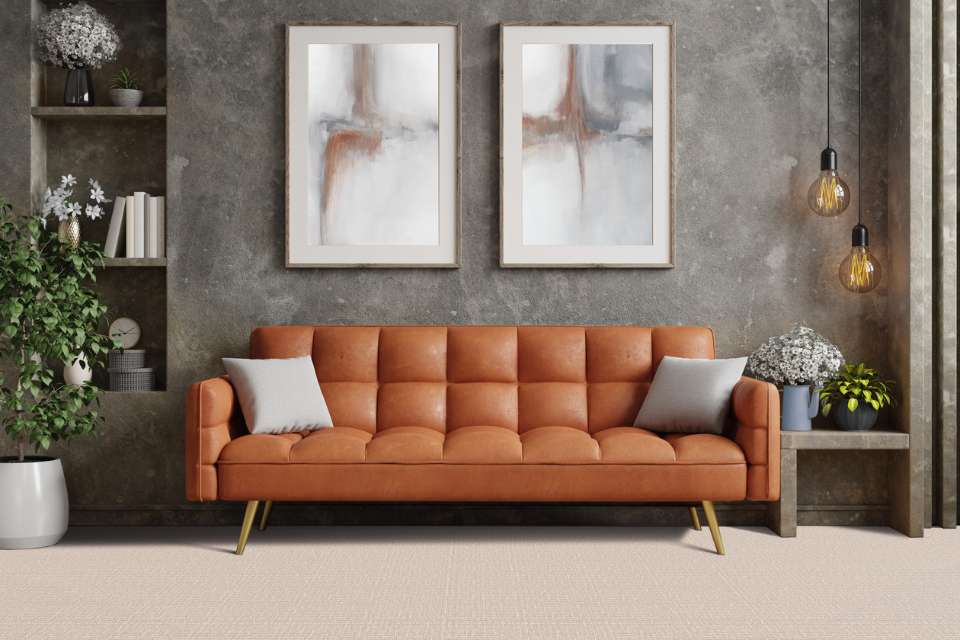
If you’re looking for something “rad” without being radical, think about these ’80s-inspired design trends. You never know when inspiration from the past can strike.
Looking for even more ways to make the old new? Stop by your local Flooring America to discover a wide selection of hardwood, luxury vinyl, laminate, carpet, and more.